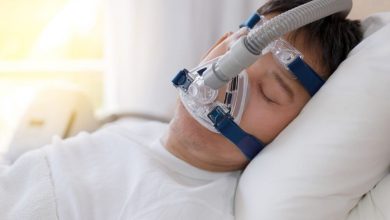Minimizing Risks in Rhinoplasty: Tips for a Safe and Satisfying Experience

Rhinoplasty, often called a “nose job,” is one of the most common cosmetic surgeries worldwide. Known for its ability to reshape or repair the nose, rhinoplasty can enhance appearance and address functional issues like breathing difficulties. While many patients achieve excellent results, it’s natural to wonder about the risks involved. Is rhinoplasty considered low risk? Let’s explore the procedure in depth, assess its safety, and understand how to minimize potential complications.
Rhinoplasty is a surgical procedure that modifies the nose’s structure, either for cosmetic reasons or to improve functionality. It is highly customizable, tailored to meet each individual’s needs. The three main types of rhinoplasty include:
- Cosmetic Rhinoplasty: This focuses solely on the aesthetics of the nose, such as reducing its size, refining its tip, or correcting asymmetry. It’s a popular choice for individuals unhappy with their natural nose shape.
- Functional Rhinoplasty: This procedure is performed to correct issues like a deviated septum, collapsed nasal valves, or chronic breathing problems. It’s often covered by insurance when addressing medical needs.
- Revision Rhinoplasty: A more complex procedure, revision rhinoplasty is done to correct or refine the results of a previous rhinoplasty. It often involves scar tissue or structural challenges and requires a highly skilled surgeon.
Each type of rhinoplasty carries its own unique considerations, but all share the same fundamental goal: to create a nose that complements the face and functions optimally.
The Rhinoplasty Surgical Process
Rhinoplasty can be performed using two primary techniques:
- Open Rhinoplasty: This involves a small incision on the columella (the tissue between the nostrils). The surgeon lifts the skin to access the nasal structure, allowing for more precise adjustments.
- Closed Rhinoplasty: In this technique, all incisions are made inside the nostrils, leaving no visible scars. However, it may not be suitable for more complex cases.
The procedure typically lasts 2-4 hours and is performed under general anesthesia. The choice of technique depends on the patient’s goals, anatomy, and the surgeon’s expertise. While the surgery is intricate, advancements in techniques have improved its safety profile significantly.
Is Rhinoplasty Considered Low Risk?
Rhinoplasty is generally considered a low-risk surgery, especially when compared to other major surgical procedures. It is less invasive than operations like tummy tucks or facelifts, and most patients recover without complications. However, as with any surgery, rhinoplasty does carry some risks. The level of risk depends on factors such as the patient’s health, the complexity of the procedure, and the surgeon’s experience.
When performed by a board-certified, skilled surgeon, the likelihood of complications is significantly reduced. Understanding potential risks, as well as what to expect during recovery, can help set realistic expectations and ensure a smooth process.
Potential Risks and Complications
Common Short-Term Side Effects
These effects are part of the normal healing process and usually resolve on their own within weeks or months:
- Swelling and Bruising: Most noticeable around the eyes and nose, this fades gradually during recovery.
- Temporary Numbness: Some patients experience numbness or a tingling sensation in the nose, which improves as nerves heal.
- Breathing Difficulties: Congestion or difficulty breathing is common during the initial recovery phase due to swelling.
Possible Long-Term Risks
While rare, long-term risks can include:
- Asymmetry: Uneven results may occur due to uneven swelling or healing, though these can often be corrected with minor adjustments.
- Breathing Issues: Improper structural changes during surgery may lead to difficulty breathing, which could require further treatment.
- Visible Scarring: Most scars are minimal or hidden, but improper healing or keloid formation can make them more noticeable.
Rare but Serious Complications
- Infection: While uncommon, infections can occur and are typically managed with antibiotics or further medical intervention.
- Anesthesia Complications: Though rare, reactions to anesthesia can pose risks during surgery.
- Septal Perforation: A hole in the nasal septum may occur in rare cases, leading to whistling sounds or breathing issues.
How Surgeon Expertise Reduces Risks
The choice of surgeon is one of the most critical factors in determining the safety and success of your rhinoplasty. Experienced surgeons are skilled in minimizing risks, ensuring precise adjustments, and avoiding overcorrections or undercorrections.
What to Look for in a Surgeon:
- Board certification in plastic or facial reconstructive surgery
- A strong portfolio of before-and-after photos
- Positive patient reviews and testimonials
- Low revision rates
A consultation with your surgeon should include a detailed discussion of your goals, medical history, and the potential risks specific to your case.
Recovery and Risk Management
Recovery Timeline
- First Week: Swelling and bruising peak but begin to subside. Splints or bandages are typically removed after 7-10 days.
- 2-4 Weeks: Most swelling diminishes, and normal activities can gradually resume.
- 3-6 Months: Final results begin to emerge as swelling resolves completely.
Post-Surgical Care Tips
- Avoid strenuous activities for the first few weeks.
- Sleep with your head elevated to reduce swelling.
- Follow your surgeon’s instructions for cleaning and caring for the nasal area.
- Report any unusual symptoms, such as persistent pain, redness, or fever.
Cost of Rhinoplasty in Turkey
Turkey is one of the top destinations for rhinoplasty due to its affordability and world-class medical facilities. The average nose job Turkey ranges from $2,500 to $4,500, significantly lower than the $8,000 to $15,000 typically charged in the US or Europe.
What’s Included in Turkish Rhinoplasty Packages?
- Pre- and post-operative consultations
- Airport transfers
- Luxury hotel accommodations
- Post-surgical follow-ups
While the cost is appealing, patients should thoroughly research clinics and surgeons to ensure safety and quality.
How to Minimize Risks
To ensure a smooth and successful rhinoplasty experience:
- Choose a Qualified Surgeon: Research credentials and patient outcomes.
- Follow Instructions: Adhere strictly to pre- and post-operative care guidelines.
- Maintain Realistic Expectations: Understand what rhinoplasty can and cannot achieve.
Rhinoplasty is a relatively low-risk surgery when performed by an experienced and qualified surgeon. While minor side effects like swelling and bruising are common, serious complications are rare. By choosing a skilled surgeon, preparing thoroughly, and following aftercare advice, you can enjoy the benefits of a beautifully sculpted and functional nose. Take the time to educate yourself and prioritize safety to ensure your rhinoplasty journey is a positive one.
Ready to transform your look and boost your confidence with rhinoplasty? FlyMedi is here to make your journey seamless and stress-free! With access to world-class clinics and highly experienced, board-certified surgeons in top destinations like Turkey, FlyMedi ensures exceptional care at an affordable price.
Whether you’re exploring your options or need personalized support, FlyMedi offers everything you need to achieve your dream results safely. Don’t wait—visit FlyMedi.com today to book your free consultation and take the first step toward a beautifully enhanced nose!





